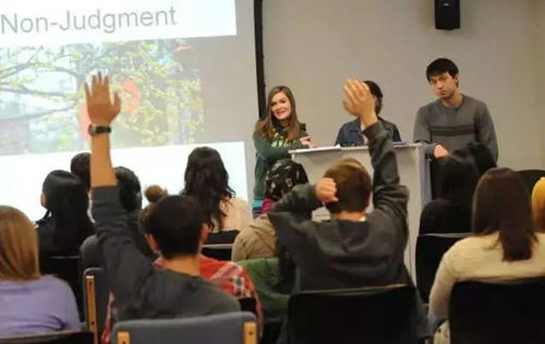发布时间:2020-12-16 热度:
专业高分论文代写_专业心理学写作,专业心理学高分代写,专业心理学网课代修
Museum Pieces and Living Composers
Concert hall displays artworks of long-dead composers, and these artworks shows siginificant influences on the music notion of living composers. When dead composers’ art works lost their original social function, their artworks were valued exclusively as autonnom museum(Burkholder 119). Then, the musical museum shows the established music tradtion and interact with the art creation of living composers. Through analyzing the rise of the music canon in the nineteenth century and discussing the interaction between music canon and contemporary composers, this paper finds that serious musicians push forward the rise of the music canon to deal with the decline of audience aesthetics and musicianship, and then composers in later generations continue their art creations based on the established tradition of music canon.
The Rise of the Music Canon in the Nineteenth Century
Peter Burkholder introduced the rise of the music canon in the nineteenth century in his book Museum Pieces: The Historicist Mainstream in Music of the Last Hundred Years. According to Burkholder, up to the mid-nineteenth century, the music market was fulled with mass music which is “brilliant but not difficult” (117). It means that the music creation of contemporary composers showed a declining standard. Then, this kind of music met the taste and the appreciation level of the new mass audiences (Burkholder 117). This background drove serious musicians to turn back to the musical canon and value music masters like Mozar, Haydn, and Beethoven.

The rise of the musical canon led to a revolutionary change in appreciation and creation process of art music by changing artworks performed in the music hall. According to Burkholder, by late nineteenth century, the concert hall bacame a museum whose purpose was to display art works created by previous generations rather than showing the art works created by new musicians (117). Through narrowing artworks performed in the music hall, serious musicians lowered the threshold of music appreciation to capture the mass. Then, along with the lower threshold of music appreciation, music creation were also narrowed to follow the canon tradition.
Ludwig van Beethoven was honored as one the three great music masters. According to Burkholder, Beethoven and other two masters’ music was outstanding because of “the strenth of their musical personality,” “the level of craftsmanship,” and “the ineffable quality of inspiration, beauty, and truth (120). This statement illustrated both the high artist standard and the humanity value of Beethoven’s music. Then, the high artist standard and the humanity value made Beethoven’s artwork domin music halls for a relatively long period of time. From 1842 to 1850, more than 60 percent of the orchestra’s repertory is Beethoven’s works (Frisch 177). The popularity of Beethoven’s music reflected the superior poisition of Beethoven in the art music field. Also, Beethoven as a liberated composer inspired many composers in later generations. Although Beethoven let more people know the discontent of the liberated composer, he set the example to take artistic advantage of the autonomous art of music (Goehr 207). Both the artwork and the art career of Beethoven influenced many audiences and composers in later generations. Symphony No. 9 told a story from darkness to light (Beethoven 1822-1824). Then, many composers in later generaions are influenced by Beethoven to end their works with a positive information.
The Established Tradition and the Living Composers
Music canon became an established tradition, and this tradition influenced the creating purpose and creating style of living composers siginificantly. As a result of the musical museum, the idea of writing music became “creating works which show classical craftsmanship and a distinct musical personality” (Burkholder 133). It means that writing music, especially symphonies, was a combination of both the established music tradition and the distinctive personality. Dating back to the late nineteenth century, composers wrote distancitve works to their music personalities, but their work met the basic institutional and musical norms (Frisch 177). It means that the creation of art music relies on both music norms and music personalities.
Composers in later generations continued this tradition. In the past one hundred years, the mainstream music art creation paid homage to the tradition of European art music, target audiences were people familiar with the music canon in the eighteenth century and the nineteenth century, and the aesthetic assumptions focused on the relationship between artists and audiences who are informed members of music canon (Burkholder 116). It means that the creating style of living composers is based on the music canon in the eighteenth century and the nineteenth century.
Music art works of Johannes Brahms born in 1833 was influenced significantly by the canon music, and he also developed his art personality out of the canon tradition. Symphony No. 4 written by Brahms expressed the expectation for a bright future, and the music is full of humanity (1884). The exploration of humanity and the strong emotion in this symphony were influenced by the Beethoven style. Meanwhile, Brahms explored his musci personality by using irregular rhythms and subtle changes to express emotions naturally.
Aaron Copland born in 1900 continued the tradition of canon, and he added the element American country music into his art creation. Symphony No. 3 created by Copland had a basic tone of dignity and heroism. Since heroism and dignity were also basic tone in many works written by Beethoven, Copland expressed his artwork in a Beethoven way. Then, Copland made use of American elements like ballets to show his music personality. American elements made Copland’s music work different from others.
John Cage born in 1912 did more creation in performing forms, but his work also respect to the music canon. 4’33’’ created by Cage was full of creation and showed a new form to interact with audiences. Cage was the pioneer to explore the application of noise music, occasional music, and audience interaction in music artworks. However, the idea of using music to communicate with audiences was a canon tradition.
Conclusion
In conclusion, the rise of the musical canon in the nineteenth century made the music hall a museum to display art works created by previous generations. Then, the established museum tradition influenced composers in later generations. The creating purpose of living composers became to show the aethetic consistent with music canon and explore their music personality at the same time. Then, the new challenge for living composers was to create excellent works which can be displayed beside music canon.








